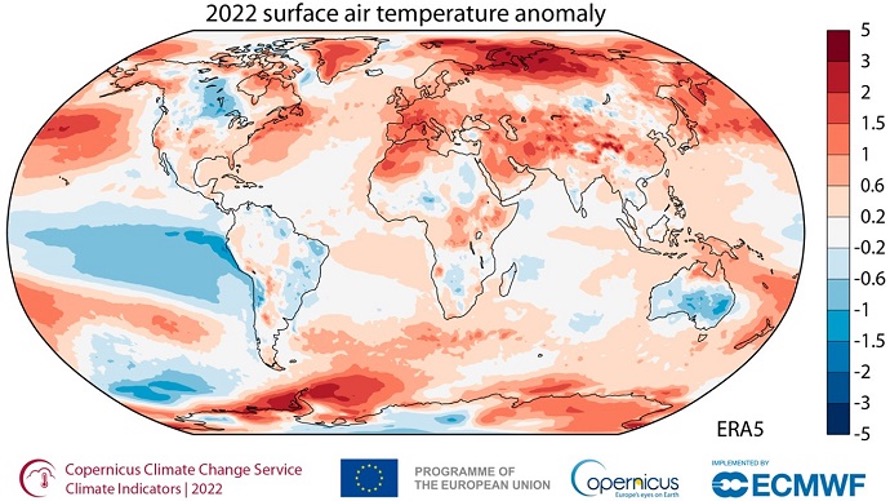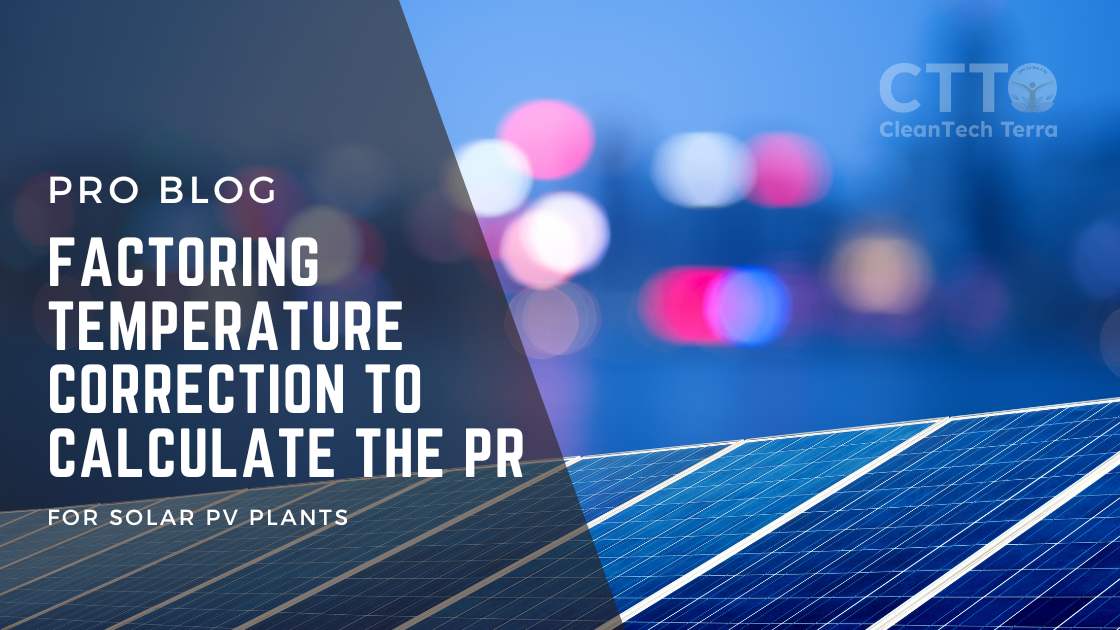Factoring Temperature Correction to Calculate the PR of a Solar PV Plant
When developing and financing utility-scale PV projects, a meticulous yield assessment is paramount. Typically, these assessments are conducted using PVsyst simulations, which are widely recognized and deemed bankable. Yet, there’s a catch: the expected yield heavily relies on historical weather data.

Credit: C3S/ECMWF.
As we tread deeper into the era of global warming, the anomalies in weather data grow more pronounced, often impacting the PR, among other performance indicators, of projects adversely. With this in mind, the need to factor temperature correction in PR calculations becomes profoundly significant.
PV modules have performance characteristics heavily influenced by temperature. In general, as temperature rises, the efficiency reduces. Higher temperatures cause the semiconductor materials in PV cells to become more conductive, which increases the flow of charge carriers and consequently minimizes the voltage generated. Let’s delve into the intricacies of temperature correction and its overarching role in gauging a PV plant’s performance.
What is the Performance Ratio (PR)?
In the realm of solar PV, the Performance Ratio is a dimensionless value that indicates the efficiency with which a PV plant converts incident solar irradiation into electrical energy. It’s essentially the ratio of the actual output from the plant to the expected output under ideal conditions.
Mathematically, PR can be defined as:

Where:
– Actual output is the energy produced by the plant.
– G is the availability correction factor.
– D is the degradation correction factor.
Why Factor Temperature Correction?
Three core reasons underline the importance of considering temperature correction:
- Accuracy in Analysis: A PR calculated without considering temperature can lead to misleading results. On particularly hot days, the PR can seem unusually low even if irradiance is high and the actual generation in kWh terms is high.
- Financial Implications: Investors and stakeholders need accurate performance metrics to gauge their return on investment. Overestimations of performance can lead to performance forecasts that are too optimistic and the solar asset won’t be able to achieve in reality which would eventually lead to liquidated damages and potentially unnecessarily reduce the asset value. We have witnessed this in particularly hot years which lead to confusion due to PR formula over-simplicity.
- EPC Warranties Risk Reduction: It is common that the EPC contractor was not involved in the initial Energy Yield Report “EYR” preparations since developers assign this to consultants. Nevertheless, it is typically assigned the PR risk in the first two years which leads to two common scenarios: the EPC buffers the costs to factor potential performance LDs, or the EPC gambles/ignores the potential actual temperature increase and its impact on the PR.
Factoring Temperature Correction
The temperature correction is often factored into the PR calculation using the temperature coefficient of the PV modules. This coefficient indicates how much the performance of a module decreases for each degree Celsius increase in temperature above the standard testing conditions.
To incorporate temperature correction:
Corrected Expected Energy Output = Expected Energy Output * (1 + coefficient * (Tactual – Tstandard))
Where:
– Tactual is the actual measured cell temperature.
– Tstandard is the modelled yearly reference cell temperature as per the EYR
Conclusion
The growing anomalies in weather data, exacerbated by global warming, necessitate a refined approach to yield assessments in solar PV plants. Factoring temperature corrections into PR calculations is not merely a technical nicety but a critical step to accurately gauging a plant’s performance, ensuring sustainability and optimized solar energy generation.


